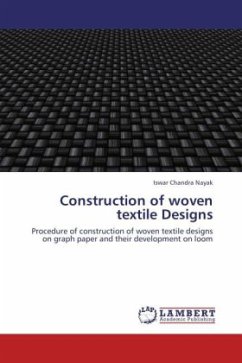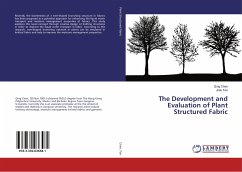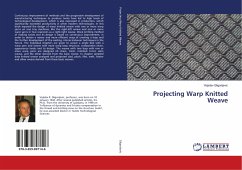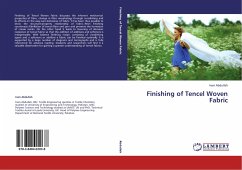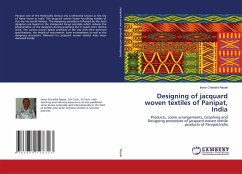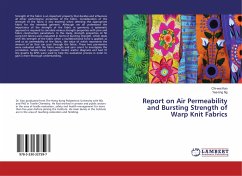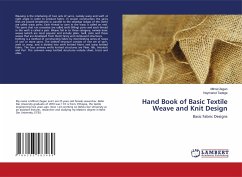
Hand Book of Basic Textile Weave and Knit Design
Basic Fabric Designs
Versandkostenfrei!
Versandfertig in 6-10 Tagen
27,99 €
inkl. MwSt.

PAYBACK Punkte
14 °P sammeln!
Weaving is the interlacing of two sets of yarns, namely warp and weft at right angle in order to product fabric. In woven construction the yarns that are placed lengthwise or parallel to the selvedge (edges of the cloth) are called warp yarns. Each thread or yarn in the warp is called an end. The yarns that run crosswise are called weft (filling) yarns and each thread in the weft is called a pick. Weave fall in to three category, namely basic weave (which are most popular and include plain, twill, satin and those weave that are developed from them) fancy and compound structures. Knitting is a ...
Weaving is the interlacing of two sets of yarns, namely warp and weft at right angle in order to product fabric. In woven construction the yarns that are placed lengthwise or parallel to the selvedge (edges of the cloth) are called warp yarns. Each thread or yarn in the warp is called an end. The yarns that run crosswise are called weft (filling) yarns and each thread in the weft is called a pick. Weave fall in to three category, namely basic weave (which are most popular and include plain, twill, satin and those weave that are developed from them) fancy and compound structures. Knitting is a method of constructing fabric by intermeshing series of loops of one or more yarns. The knitted structure consists of one set of yarn, weft or warp, and is divided into weft knitted fabric and warp knitted fabric. The four primary wefts knitted structures are Plain, Rib, Interlock and Purl. The common warp knitted structures include chain, tricot and atlas.






